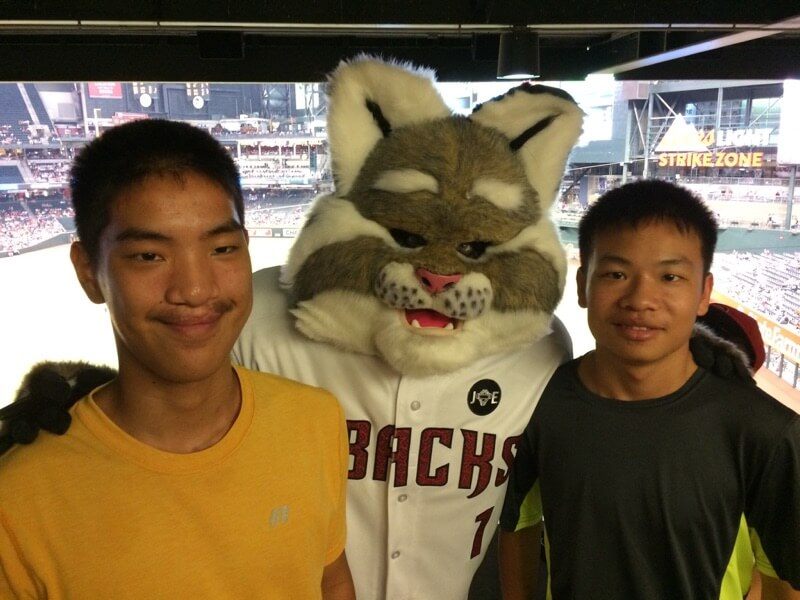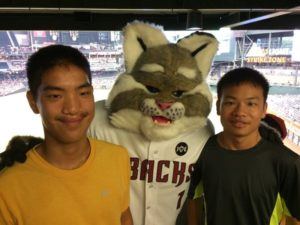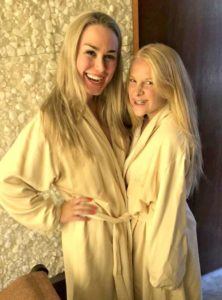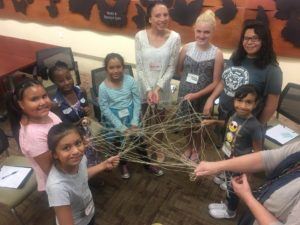
Craniofacial Patients Gain Confidence in Solidarity
Thanks to donations, the center held social and team-building events throughout the summer at no cost to patients and their families.

“The programs offer a variety of ways to bring families living with craniofacial differences together to support each other,” said Program Coordinator Lori Takeuchi. “The patients, both adults and children, enjoy the opportunity to meet someone else who understands what it is like to live in the community.”
Boys piled into a suite at Chase Field on a Friday night to watch an Arizona Diamondbacks baseball game with their fathers, grandfathers, brothers, and uncles as part of the center’s Guys’ Night Out event.
The Diamondbacks donated the tickets, and mascot Baxter paid the group a surprise visit during the third inning.
“From my son’s view, he likes that there are other kids besides him with cleft,” Lynette Chama said of her son Diego, who attended the game. “He’s very cautious of what people think and ask, but for him to put his guard down was awesome.”
The center also held a Girls’ Day Out event at the Hyatt Regency Scottsdale Resort & Spa at Gainey Ranch, where mothers and daughters were treated to lunch by the resort and pampered with spa treatments by Spa Avania employees who donated their morning hours to the group.
For some of those who attended, it was their first time receiving professional manicures, pedicures, and massages.

“It’s just what Helena and I needed at the end of the summer,” said Carol Moriarty, who attended the event with her daughter. “We were treated like royalty, we saw old friends, met new friends, and had a delicious lunch.”
The Cleft and Craniofacial Center also held a summer girls’ group to bring together girls with craniofacial differences. The program lasted four weeks for girls ages 8 to 13 and five weeks for girls 14 and older.
Through various activities and exercises, the program sought to strengthen girls’ social and conversational skills, teach them the power of positive thinking, and help them build their overall self esteem.
“I learned that you can grow as a person and gain confidence throughout the weeks,” said Sarah Woolworth, who has Treacher Collins syndrome. “I think this gives us an opportunity to meet new people and hang out with friends all in one place together, and we learn something about ourselves and each other.”
Woolworth said she particularly enjoyed the community service project in which the girls made goodie bags for families in hospital waiting rooms.

“We got to see the grass on the other side, meaning we got to see the families in the waiting rooms when we’re usually the ones having surgery in the operating room,” she said.
Other girls reflected on playing the “web game,” which showed them how much they had in common with each other, and improving their communication skills by remembering to “SEE” – an acronym for smile, eye contact, and engage.
“This group helps me a lot to accept who I am,” said Vanessa Lozano, a cleft lip and palate patient. “It’s amazing that this group brought us together and understands what we are all going through. As a group, we are family and much stronger than ever.”
